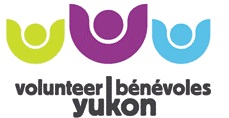Four ways nonprofits can use podcasting
Author’s note: This blog was originally written in 2016 and was updated in 2020 to reflect current information and practices.
On demand, up to the minute and valuable information is available to anyone in today’s global digital community. Your nonprofit has important info, intriguing stories and a unique perspective to share. Get the word out there! Let your organization’s voice be heard by creating a podcast – an audio production that listeners can access on demand. With millions of podcast downloads every month from services such as iTunes and Spotify, the popularity of podcasting continues to grow.
Podcasts range in format from casual conversations to formal presentations and interviews. Your approach should be in line with your nonprofit’s overall approach and tone.
Podcasting provides a different way for people to interact with your organization. The episodes you produce can help your organization raise its profile, develop a personal connection, and stand out from the crowd.
Four ways your nonprofit can use podcasting to raise its profile, develop connections and stand out from the crowd #NPMC Click To TweetHere are four ways you can use podcasting for your nonprofit:
1. Create a personal connection
You probably spend significant time planning your marketing and communications strategies. Do you have a way to make things personal? Creating a personal connection between your staff, volunteers, the people you serve, and potential donors who want to be part of what you do?
 This is your chance to create a personalized link to your audience(s). There’s nothing like hearing someone’s voice and getting familiar with it – there’s a comfort level and trust built when you feel like you’re getting to know someone. Hearing a consistent voice regularly through your headphones creates that kind of connection.
This is your chance to create a personalized link to your audience(s). There’s nothing like hearing someone’s voice and getting familiar with it – there’s a comfort level and trust built when you feel like you’re getting to know someone. Hearing a consistent voice regularly through your headphones creates that kind of connection.
A great example of this is the Art Gallery of Ontario’s podcast series, where they explore the stories behind paintings in their collection, speak to staff members about their roles at the gallery and lots more.
2. Raise your profile by sharing your expertise
 Your organization has a mission and works hard to achieve it through a variety of activities. Do you ever have people say, “I had no idea you did that!?” (fill in the blank for “that”). Often nonprofits are involved in many kinds of work and no one audience is familiar with all that you do, and how the info/services you provide can be of benefit to them.
Your organization has a mission and works hard to achieve it through a variety of activities. Do you ever have people say, “I had no idea you did that!?” (fill in the blank for “that”). Often nonprofits are involved in many kinds of work and no one audience is familiar with all that you do, and how the info/services you provide can be of benefit to them.
An example of this approach is the Maytree Foundation’s Five Good Ideas podcast, which grew out of their lunch-and-learn program for nonprofit professionals. The organization invites experts to share five practical ideas on a key issue facing non-profit organizations. For people who can’t attend the session live the podcast offers an additional way for Maytree to connect, provide value, and demonstrate their leadership.
3. Share your stories
The impact of nonprofit work tends to come alive when we hear from the people who access, benefit and have success as a result of being involved with the organization. How many times have you built your annual report, social media post or presentation around a great good-news story? My guess is it’s a regular occurrence because those stories paint a vivid picture of the “why” we do what we do.
 Podcasts that are built around people sharing their own personal stories are exceptionally engaging and keep me coming back. The episode from Habitat for Humanity Canada podcast entitled The Impact of a Habitat Home shares the stories of two Canadian families in their own words. It’s powerful. The organization says this episode highlights “great examples of the Habitat mission in action – bringing communities together to help families build strength, stability and independence through affordable homeownership.”
Podcasts that are built around people sharing their own personal stories are exceptionally engaging and keep me coming back. The episode from Habitat for Humanity Canada podcast entitled The Impact of a Habitat Home shares the stories of two Canadian families in their own words. It’s powerful. The organization says this episode highlights “great examples of the Habitat mission in action – bringing communities together to help families build strength, stability and independence through affordable homeownership.”
Consider whether an entire episode of stories, or perhaps a personal storytelling element within episodes could work for your nonprofit. It’s hard for listeners to not be moved by a well-told story, shared from the heart by people who have been positively impacted by the programs or services of your organization.
Share your nonprofit's expertise and impact stories with an engaging podcast #NPMC Click To Tweet4. Offer resources
Nonprofit marketing and communications professionals put a lot of work into creating compelling and engaging resources. Unfortunately, these excellent materials don’t always achieve the reach we’d like them to have. By adding a podcast to your tools for sharing there’s an opportunity to leverage work you create for other purposes, ie: repurposing the content of a blog post. With a podcast, you’re making the most of your work by delivering info via an additional communication channel and engaging with new people.
 Volunteer Yukon has a suite of resources available, including podcasts, documents, and training videos. Tackling topics such as HR management, privacy protection, and liability/insurance, they have incorporated the podcast method of info delivery into their offerings.
Volunteer Yukon has a suite of resources available, including podcasts, documents, and training videos. Tackling topics such as HR management, privacy protection, and liability/insurance, they have incorporated the podcast method of info delivery into their offerings.
Things to think about when planning a podcast
- The audience for your podcast: some podcasts are created for internal audiences such as staff, volunteers or donors. Others are geared towards an external audience, serving to inform and attract people to the work of your organization.
- Episode schedule and organization: consider whether you will group episodes according to topic area, create a seasonal timeline, run indefinitely on a fixed schedule, or use some other organizational premise.
- Setup: think about how your podcast will be set up (interview? narrative?) and how it will sound. Will it be formal in tone, or lean towards casual and conversational? Will one person deliver the content, perhaps co-hosts, or an interviewer and guest? Will it be short form or long form in terms of length? I’ve listened to podcasts that range from 10 minutes to 2 hours long! Your decisions should be based on the needs and desires of your audience.
- Music: If you need music for an intro, segment transition or closing, determine where this music will come from and ensure you have the rights to use it. There are many music options including some that have been made available by creators for free under a Creative Commons License. Buzzsprout gives a great overview of this information, including debunking some myths around the use of music and copyright considerations. Be sure you read the fine print to ensure you are fulfilling any and all requirements of these types of licenses.
Getting started
If you’re interested in learning more, there are tons of online resources to help you get started. One of the first things you should do is listen to podcasts! Pick a couple of topic areas that interest you – whether it’s a nonprofit’s podcast, or something purely for your own learning or entertainment. Listening to several episodes will help you get an ear for the medium and jumpstart your creative side in establishing one of your own.
There are lots of resources available for nonprofit marcom pros who are looking to enter the world of podcasting, for example:
- Tony Martignetti’s Nonprofit Radio (a weekly podcast on topics of interest to nonprofits)
- The “Using Local Podcasts for a Purpose” episode of the Using the Whole Whale – A Nonprofit Podcast
- Events and conference sessions
- One of the many books on the topic
Your nonprofit has lots to offer this world! Podcasting can be a great way to create a personal connection with audiences, raise your profile by sharing expertise, share stories and offer resources. I’ll look forward to adding your episodes to my playlist!



 PRINT
PRINT